24 Hours Hotline: +8613735411378
Email:[email protected]
24 Hours Hotline: +8613735411378
Email:[email protected]
Introduction: Why Zhangjiajie Should Be on Your Bucket List
Hidden deep within China’s Hunan Province lies a surreal landscape of towering sandstone pillars, lush valleys, and mist-shrouded peaks — welcome to Zhangjiajie National Forest Park, the real-life inspiration for the floating Hallelujah Mountains in James Cameron’s Avatar.
For travelers from the USA seeking something extraordinary, Zhangjiajie promises a dreamlike escape filled with natural wonder, thrilling adventures, and rich cultural encounters.
Good to Know: Zhangjiajie is best visited on a private family tour in China, with local guides to make your journey smooth and immersive.
How to Get to Zhangjiajie from the USA
Traveling from the United States to Zhangjiajie may sound like an adventure into the unknown, but with smart planning and the right partners, it’s a smooth and rewarding journey. Here’s how to get there efficiently:
1. Fly from the US to a Major Chinese International Hub
From major US cities such as New York (JFK/EWR), Los Angeles (LAX), San Francisco (SFO), Chicago (ORD), or Dallas (DFW), your first step is flying to one of China’s major gateway airports. These are the best-connected and most reliable for international arrivals:
Beijing Capital International Airport (PEK) or Beijing Daxing (PKX) ;
Shanghai Pudong International Airport (PVG) ;
Guangzhou Baiyun International Airport (CAN) ;
Chengdu Tianfu International Airport (TFU)
Hong Kong International Airport (HKG)
Airlines with direct or one-stop flights from the US include:
United Airlines, American Airlines, Air China, China Eastern, China Southern, Cathay Pacific, Singapore Airlines (via SIN), and EVA Air (via TPE).
2. Domestic Flight to Zhangjiajie Hehua Airport (DYG)
After arriving in your Chinese hub, take a domestic flight to Zhangjiajie Hehua Airport (DYG) — a small but well-connected airport just 30 minutes from the main scenic areas.
Frequent routes to Zhangjiajie:
Beijing (PEK/PKX) — DYG: approx. 2.5 hrs ;
Shanghai (PVG/Hongqiao) — DYG: approx. 2.5 hrs ;
Guangzhou (CAN) — DYG: approx. 1.5 hrs ;
Chengdu (TFU) — DYG: approx. 1.5 hrs ;
Shenzhen (SZX) — DYG: approx. 1.5 hrs ;
Xi’an (XIY) — DYG: approx. 1.5 hrs ;
Flights usually operate in the late afternoon or evening — we’ll help ensure your connection times are realistic and comfortable.
3. Alternative Option: High-Speed Rail to Zhangjiajie
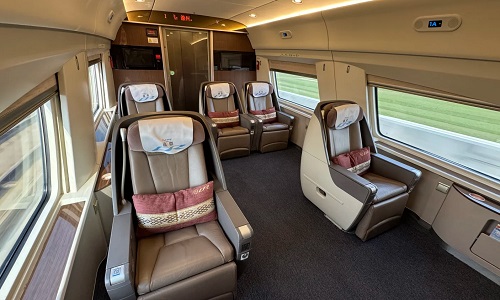
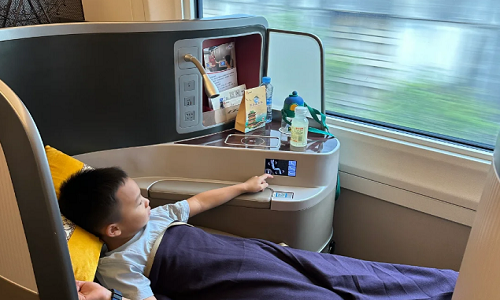
If flight schedules don’t align or you want a scenic journey through China, we can arrange high-speed train travel to Zhangjiajie:
From Beijing: high-speed train to Changsha (approx. 6 hrs), then a 4-hour car ride or a bullet train to Zhangjiajie.
From Shanghai: high-speed train to Changsha (approx. 6 hrs), followed by transfer.
From Guangzhou: direct high-speed rail to Zhangjiajie West (approx. 6.5 hrs) now available with the newer lines.
Visa Requirements for U.S. Citizens
Before embarking on your journey to Zhangjiajie, U.S. citizens are required to obtain a tourist visa (Type L) to enter China. Here’s a quick overview:
Application Process:
Apply through your nearest Chinese Embassy or Consulate, or use an authorized visa service agency in the U.S.
Documents Needed:
Valid passport (with at least 6 months validity)
Completed visa application form
Passport-sized photo
Flight bookings (inbound/outbound)
Hotel reservation(s) or itinerary
Processing Time:
Usually 4–6 business days, though expedited options are available.
Visa Duration:
Typically 30–60 days per entry. Multi-entry visas are available for frequent travelers.
Tip: Start the visa process at least 1 month before your departure to avoid delays.
Top Attractions in Zhangjiajie: What You’ll Experience
Whether you're a thrill-seeker, a nature lover, or a family of explorers, Zhangjiajie has something unforgettable for you.
Zhangjiajie National Forest Park
Home to Avatar Hallelujah Mountain, Golden Whip Stream, and the Bailong Elevator (world's tallest outdoor elevator).
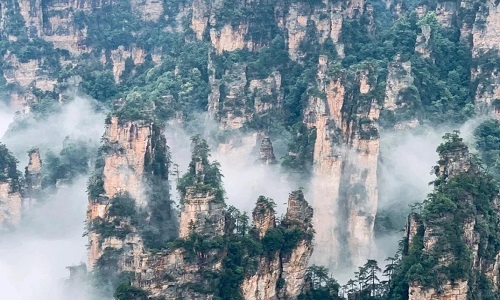
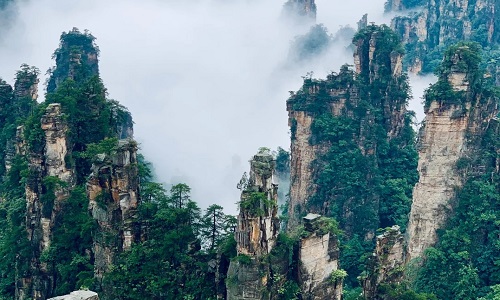
Zhangjiajie Glass Bridge
Suspended over a dramatic canyon, this is the world’s longest and highest glass bridge — both thrilling and scenic!
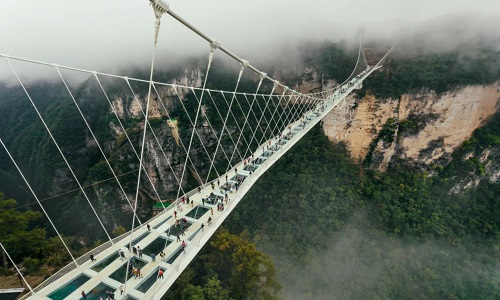
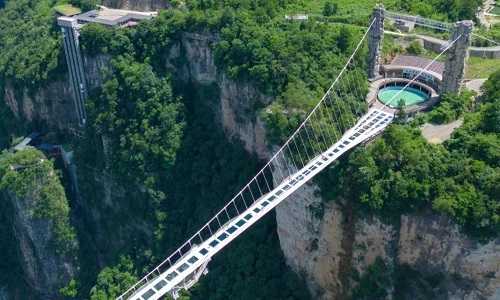
Tianmen Mountain
Take the world’s longest cable car ride and walk the cliffside glass skywalks.
Marvel at the Tianmen Cave, a giant natural archway nicknamed “Heaven’s Gate.”
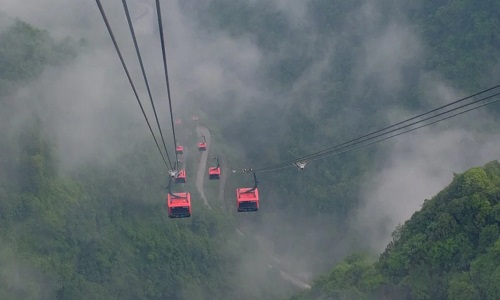

Optional Helicopter Tour
Soar above the pinnacles for once-in-a-lifetime aerial views.
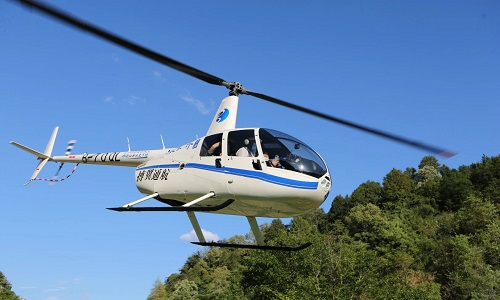
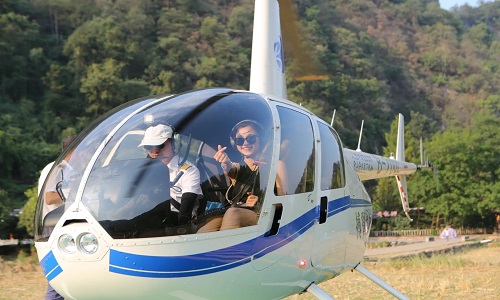
Best Time to Visit
Zhangjiajie is stunning year-round, but here’s a quick seasonal guide:
Spring (Apr–May): Blooming flowers, mild weather
Fall (Sep–Oct): Golden foliage, clearer skies
Summer (Jun–Aug): Lush greenery, some rain — ideal for adventure
Winter (Dec–Feb): Misty mountain views, fewer tourists
What to Pack for Your Zhangjiajie Adventure
To make the most of your time exploring Zhangjiajie’s stunning landscapes — from towering sandstone pillars to glass bridges and forest trails — it's important to pack smart and stay comfortable throughout your journey.
Comfortable Footwear:
Zhangjiajie’s scenic areas often involve walking along stone paths, boardwalks, and even climbing stairs or riding cable cars. A good pair of broken-in walking or hiking shoes with decent grip is essential to keep you steady and comfortable across varying terrain.
Layered Clothing:
The weather in Zhangjiajie, especially in mountainous areas like Tianzi Mountain and Yuanjiajie, can shift quickly from warm sun to misty chill. Lightweight, breathable layers — including a thin fleece or windbreaker — will help you adapt to changing temperatures without overpacking.
Rain Protection:
Short showers are common, particularly in spring and summer. A compact, foldable umbrella or a lightweight rain poncho will come in handy and take up very little space in your daypack.
Sun & Insect Protection:
Don’t forget sunscreen, a hat, and sunglasses to protect yourself from sun exposure at higher elevations. In warmer months, insect repellent is useful, especially in forested or humid areas.
Reusable Water Bottle:
Staying hydrated is important when walking or hiking. We recommend bringing your own reusable water bottle. Your guide can help you refill it during stops, reducing the need for single-use plastic bottles.
Small Daypack:
A lightweight daypack will make it easy to carry your daily essentials — water, snacks, extra layers, camera, and rain gear — while keeping your hands free for taking photos or holding onto railings during steeper climbs.
Camera or Phone with Storage:
You’ll definitely want to capture Zhangjiajie’s surreal beauty. Make sure your device is fully charged and has enough memory for all the photos you’ll be taking. A portable charger is also helpful if you're out for the entire day.
With these items packed, you'll be well-prepared for a smooth and enjoyable journey through one of China’s most breathtaking national parks.
Photography Paradise: When and Where to Capture the Magic

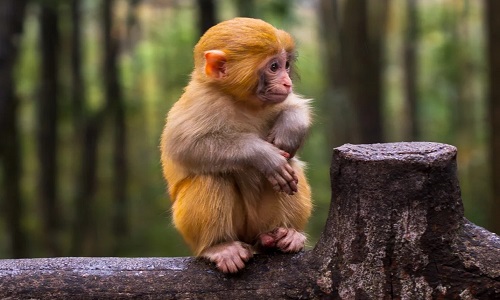
Zhangjiajie is a dream come true for photographers. The jagged sandstone peaks, cloaked in mist and crowned with trees, create a surreal, otherworldly landscape — especially at sunrise or after rainfall, when clouds drift between the cliffs like sea foam.
Top photography spots include Yuanjiajie Scenic Area (home of the so-called “Avatar Hallelujah Mountain”), Tianzi Mountain, and Glass Bridge over the Grand Canyon. Arrive early to beat the crowds and catch the best light — golden hour here can be absolutely breathtaking.
Don’t forget wide-angle and zoom lenses if you’re carrying a camera. For phone photographers, bring a portable charger — you’ll take more photos than you expect.
Hiking Heaven: Trails, Forests, and Hidden Gems
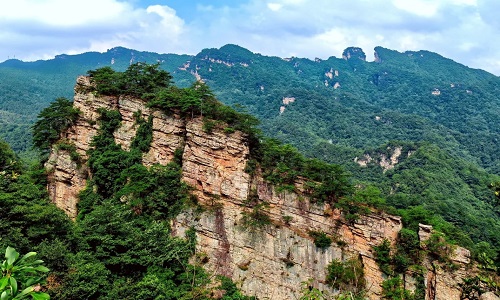

While the cable cars and buses make exploring easy, Zhangjiajie is also a paradise for hikers. Some of the most rewarding views come from quieter trails away from the main platforms.
The Golden Whip Stream Trail is a relatively easy, shaded walk along a peaceful river valley, perfect for spotting monkeys and taking in the forest. For the more adventurous, the Ten-Mile Gallery or Tianmen Mountain’s cliff-hugging glass walkway offer thrilling vertical views and unforgettable adrenaline.
Wear comfortable hiking shoes with good grip — trails can be slippery, especially after rain. And don’t forget a reusable water bottle — tap water isn’t drinkable, but you can refill at hotels or use a portable filter.
Zhangjiajie Travel Tips for US Travelers
To help you get the most from your Zhangjiajie adventure, here are some practical insights:
Best Duration - Plan at least 3 days in Zhangjiajie for:
National Forest Park (1–2 days)
Tianmen Mountain (1 day)
Optional: Grand Canyon & Glass Bridge, or cultural visits
Internet & Communication - Download WeChat and Alipay
VPN is needed for accessing Google/Instagram/WhatsApp in China
Getting Around: Trains, Buses & Cable Cars
Zhangjiajie may feel remote, but getting there — and around — is easier than you might expect. Most international travelers arrive via major hubs like Beijing, Shanghai, or Guangzhou, then catch a domestic flight or high-speed train to Zhangjiajie. The newly upgraded train lines and modernized airport make access much smoother than it used to be.
Once you’re in the area, transportation within the scenic spots is well organized. In Zhangjiajie National Forest Park, a network of eco-buses and cable cars helps you reach the mountaintop viewpoints. These rides are not just practical — they’re part of the experience, gliding past misty cliffs and deep ravines.
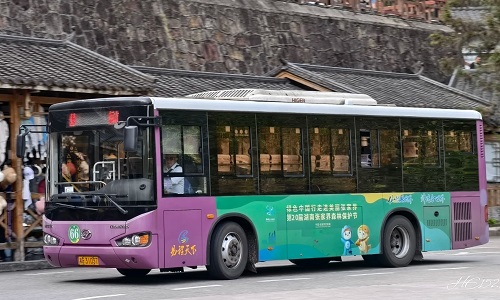
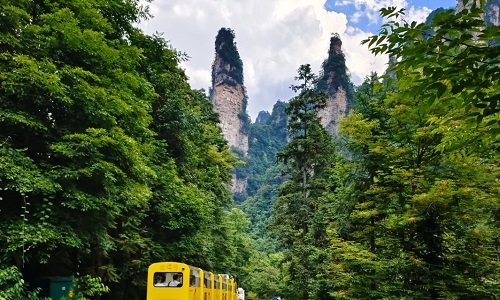
For trips between Wulingyuan, Tianmen Mountain, and downtown Zhangjiajie, local taxis and Didi (China’s version of Uber) are easy to use. Just make sure your destination is written in Chinese, and always agree on a price if taking a regular taxi without a meter.
Travel Pitfalls to Avoid: What First-Timers Should Know
Like any epic destination, Zhangjiajie can come with a few surprises — especially for first-time travelers. Here's how to avoid common bumps in the road:
Avoid peak holidays like the plague. Try not to visit during major Chinese holidays like Golden Week (early October) or Chinese New Year (January–February). Scenic spots get overwhelmingly crowded, with long lines, sold-out tickets, and packed cable cars. If you value peaceful views and stress-free logistics, aim for shoulder seasons.
Don't underestimate walking time. While cable cars and buses help, Zhangjiajie’s parks are massive. Some trails require serious hiking — and we’re talking stairs. Lots of stairs. Wear comfortable shoes, and plan realistically: two major sights per day is plenty.
Beware of unofficial guides or fake tickets. Stick with official ticket offices, or book through reputable agencies. There have been reports of scams involving “private drivers” outside airports or train stations promising fast-track entry or “secret access.” If it sounds too good to be true — it is.
Cash is no longer king. Most places in Zhangjiajie now use mobile payment apps like WeChat Pay and Alipay. If you're coming from abroad, set up these apps in advance (some now work with foreign cards), or carry some cash and a UnionPay-compatible card. Don’t expect credit cards to work everywhere.
Altitude isn’t extreme — but heights are real. Afraid of heights? Tianmen Mountain’s glass skywalk or the world’s longest cable car might test your nerves. Prepare accordingly — or skip those and enjoy the forest park’s lower trails.
Where to Stay: Best Areas for Singaporean Travellers on a Short Trip
Planning a quick getaway to Zhangjiajie? Here are the three top accommodation zones — each with its own appeal, depending on your travel style and comfort preferences.
1. Wulingyuan Town: For Nature-Loving Explorers
If your main goal is to immerse yourself in Zhangjiajie’s famous sandstone peaks and forest scenery, Wulingyuan is your best base. It’s just minutes from the entrance to Zhangjiajie National Forest Park — ideal for early morning hikes and avoiding tourist crowds.
Why Singaporeans love it:
Boutique eco-hotels offer nature views without sacrificing comfort
Many properties feature modern amenities and a peaceful, garden-like setting — reminiscent of Singapore’s green-living ethos
Close proximity to attractions like the Avatar Hallelujah Mountains and the Bailong Elevator
Recommended for: Couples, nature lovers, families who want direct access to scenic highlights
2. Zhangjiajie City: For Convenience & First-Time Visitors
Prefer to stay near transport hubs and urban comforts? The city center is a great choice. Located near Zhangjiajie Hehua International Airport and the high-speed railway, it’s perfect if you’re arriving late or departing early. It also provides easy access to Tianmen Mountain and the thrilling Glass Skywalk.
Why Singaporeans love it:
Hotels with full-service facilities, including in-house restaurants and concierge services
Great base for day trips and city exploration
Familiar urban layout that feels less remote for first-time travellers to China
Recommended for: First-time visitors, short-stay travellers, those who prefer easy access to transportation
3. Scenic Countryside & Ethnic Homestays: For Cultural Immersion
For Singaporean travellers seeking an off-the-beaten-path experience, consider staying in the countryside around Zhangjiajie or with local families from ethnic minority groups like the Tujia or Bai. These offer authentic interactions and a deeper understanding of local life — perfect for travellers interested in heritage, cuisine, and craft traditions.
Why Singaporeans love it:
Unique, culturally rich experiences not found in typical hotels
Great for educational trips with kids or meaningful, slow travel
Ideal for photographers, foodies, and wellness seekers
Note: These stays often require more planning, and may have limited English communication — so booking through a reliable travel platform or agency is recommended.
Recommended for: Culture seekers, families with teens, repeat visitors looking for a different side of China
Pro Tip: Many Singaporean travellers use translation apps like Google Translate or Papago — but pre-arranging a hotel with English-speaking staff or concierge support makes your trip smoother.
Language Tips: A Little Mandarin Goes a Long Way
While exploring the stunning landscapes of Zhangjiajie, don’t be surprised if English isn't widely spoken — especially in more remote or rural parts of the region. But that’s part of the adventure! Learning a few basic Mandarin phrases can go a long way in making your trip smoother and more immersive.
Simple words like ni hao – hello, xièxiè – thank you, and duoshao qián? – how much is it? can help break the ice with locals and show appreciation for their culture. Even just trying to say a few words usually earns a smile and a warm response.
Don't worry about being perfect — the effort is what counts, and locals genuinely appreciate it.
Cultural Etiquette: Respect in the Small Things
China has a rich cultural heritage, and even in adventurous places like Zhangjiajie, a little awareness of local customs can help you connect more deeply. For example, it’s common to greet people with a slight nod or smile, rather than a handshake — especially with older locals. Being polite, patient, and modest goes a long way, especially in smaller towns where people aren’t used to foreign tourists.
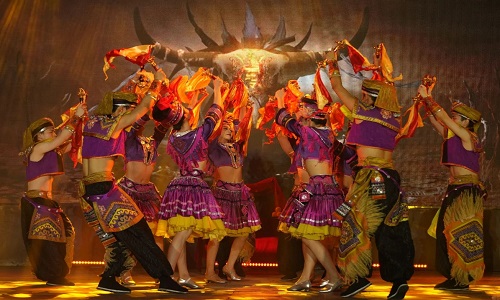
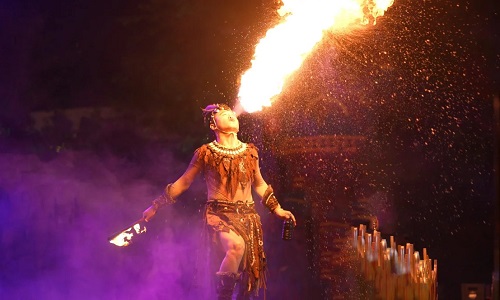
When visiting temples or sacred sites (yes, there are a few beautiful ones around Zhangjiajie), remember to dress modestly and avoid loud conversation. If someone offers you tea or snacks — especially in rural homestays — it’s polite to accept, or at least thank them warmly.
And here’s a fun one: don’t stick your chopsticks upright in a bowl of rice. It resembles incense used for funerals and is considered bad luck. Instead, rest them flat across your bowl or on a chopstick rest.
Food Adventures: Beyond the Scenic Views
Zhangjiajie is located in Hunan province, known across China for its spicy, flavorful cuisine. If you love bold tastes, you’re in for a treat! Local dishes often feature chili peppers, garlic, pickled vegetables, and a generous dash of heat.
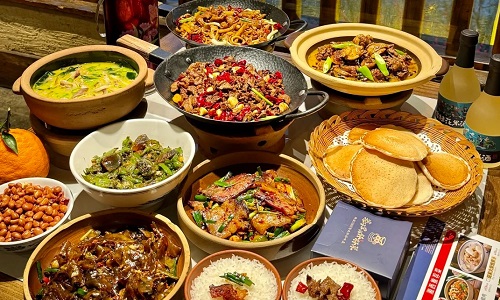
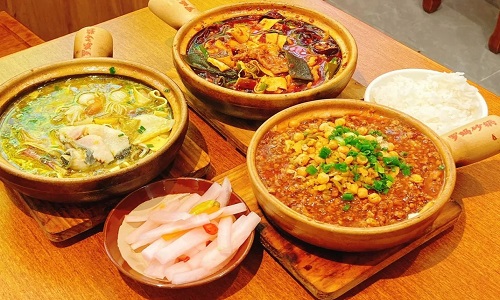
Don’t miss specialties like tuji free-range chicken hot pot, suan la fen – hot and sour noodles, and wild mountain vegetables stir-fried with smoked pork. Street food can be fantastic, especially in areas like Wulingyuan — just follow the locals and the delicious smells.
Not into spicy food? Just say bù là – “not spicy” when ordering, though be warned: even “not spicy” can still have a little kick by Western standards!
If you have dietary restrictions, it's smart to prepare a few translated phrases in advance (e.g., “I’m vegetarian” – wo chi sù ) or use translation apps with photo features to scan menus.
Wi-Fi, SIMs & Paying Like a Local
China's digital ecosystem is different from what many U.S. travelers are used to, but once you’re set up, it’s smooth sailing. Google, Facebook, and WhatsApp are blocked, so consider downloading WeChat or VPNs before you arrive.
For internet access, you can:
Buy a local SIM card (China Unicom or China Mobile) at major airports
Rent a portable Wi-Fi device (many hotels offer this too)
Most shops and restaurants in Zhangjiajie accept Alipay and WeChat Pay, but foreign cards are not always accepted. Alipay now supports foreign cards through its “TourPass” feature — very convenient if you set it up in advance.
If you prefer to use cash, Chinese yuan (RMB) is still accepted in most places — just make sure to withdraw before heading into rural areas where ATMs can be limited.
Souvenirs Worth Buying: Bring a Bit of Zhangjiajie Home
Forget the plastic keychains — Zhangjiajie offers some truly unique keepsakes that reflect the region’s culture and nature:
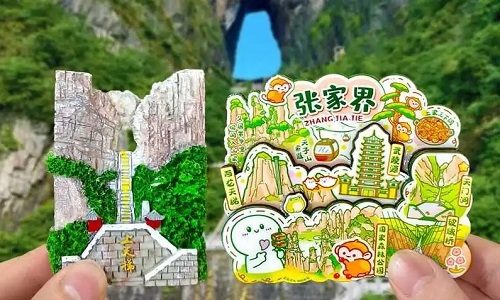
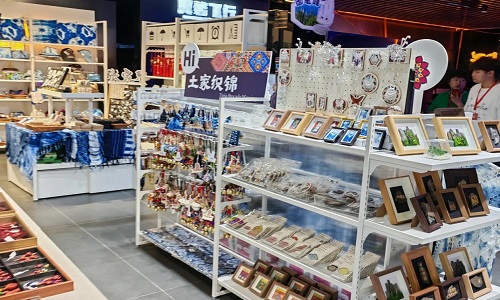
Locally grown tea from mountain farms — especially wild tea or jasmine varieties — is fragrant and affordable.
Handcrafted wood carvings of the famous rock pillars or dragons are detailed and beautifully made.
Bamboo or stone flutes (dizi) — great for display and light to carry home.
Tujia ethnic embroidery or silver jewelry, made by local minority artisans, are meaningful and support traditional craftsmanship.
Natural herbal products like camphor oil, mountain honey, or herbal balms are common in local markets and can be surprisingly useful souvenirs.
Most good-quality souvenirs are found in Wulingyuan old street markets or craft shops near park entrances. Always check if items are locally made, and feel free to bargain politely — it’s part of the fun.
Wechat: Chinaprivatetour
24 Hours Hotline:
+8613735411378
1 to 1 tailor-made service from our professional travel advisors for the most sophisticated
Constantly excellent reviews for attraction, hotel and service Competitive price
Local experts provide quality tours Best selected knowledgeable local guides Authentic local restaurants
7*24 hours available to create you a worry-free tour. No Hidden Fees and absolutely no pressure to buy. Secured







